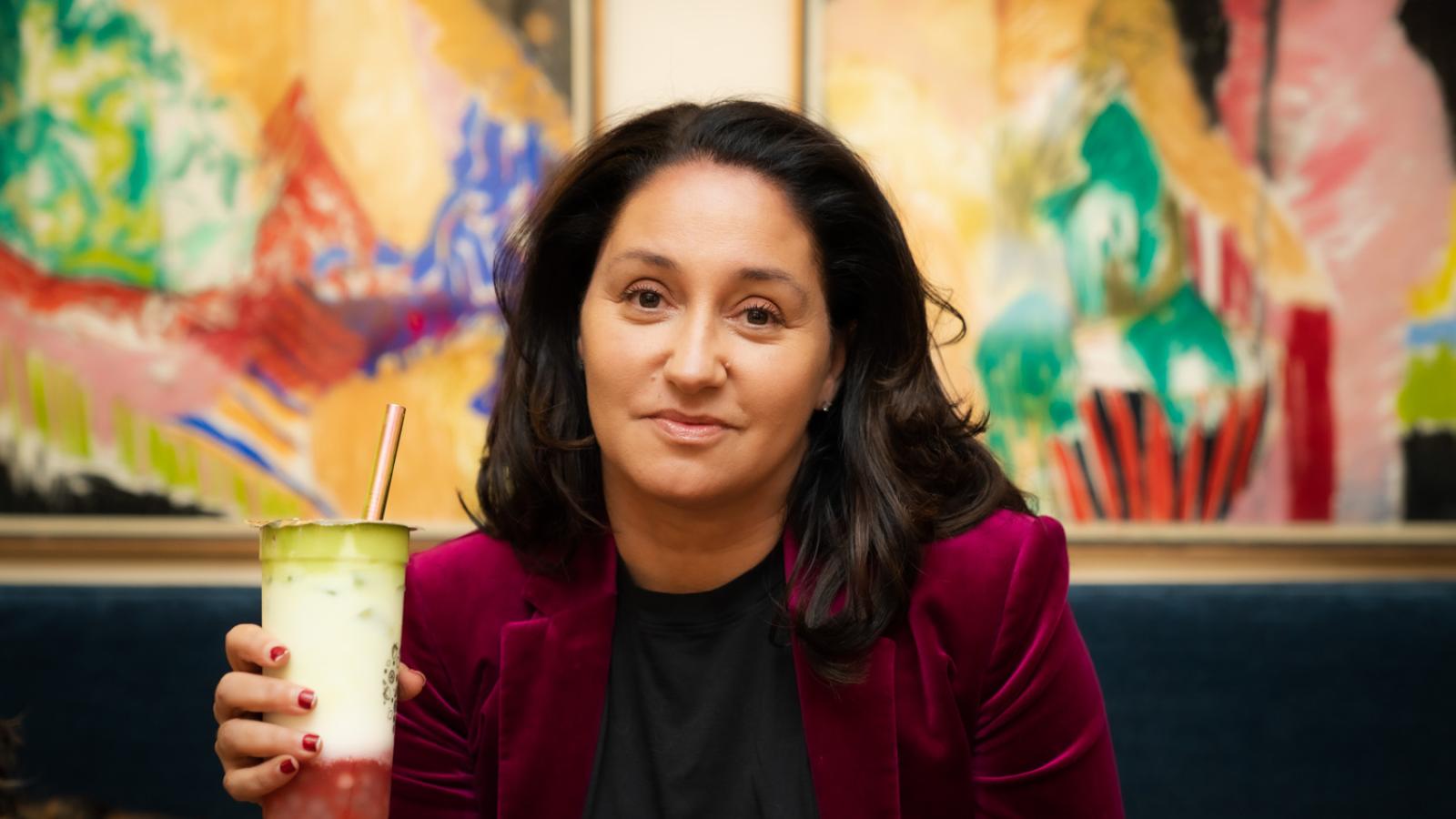On June 3, Kyla Wazana Tompkins, professor of English and gender and women’s studies, won a James Beard award for her essay “On Boba,” published in the LARB Quarterly of the Los Angeles Review of Books. The awards, presented by the James Beard Foundation, recognize exceptional chefs, restaurateurs, authors and journalists.
A scholar of 19th-century U.S. literature with an interest in the relationship between food and culture, Tompkins’ first book, Racial Indigestion: Eating Bodies in the Nineteenth Century, received the 2012 Lora Romero First Book Publication Prize and the Best Book in Food Studies Award.
We talked to Tompkins about her essay, her affinity for boba (for the uninitiated, the term “boba” refers to spheres made from tapioca but is also used to refer to the drinks that contain them) and being a food writer. The interview has been edited for length and clarity.
How did this essay come about? What inspired it?
I’ve been writing about food for about 30 years. First, I was a food writer and journalist, and then I decided to go to graduate school. Getting a Ph.D. was one of the ways that I could ask big questions.
I’ve been experimenting with new ways to write about food that bring together my background in nonfiction writing and journalism with my skills as a researcher, as someone who does archival work.
Someone asked me to write something about food for the “What is L.A.?” issue of LARB Quarterly. I thought I would write about boba because, during the pandemic, my son, who was 12 at the time, and I were going stir crazy. To entertain us, I would pick boba places that were popular, and we would go and order like eight and sample them. I’ve loved boba for a long time. My first roommate in graduate school at Stanford was a Taiwanese international student. I came from Canada, and her way of welcoming me to California was to take me out for boba. I have fond memories of it. I like chewy, gooey things. I like caffeinated things. And I like sweet things.
What made you want to be a food writer?
That is a very good question. I’m still trying to understand it. I think it’s that I come from a family for whom eating food and talking about food and having opinions about food is extremely important. At times irritatingly so. My mom also owned two restaurants and worked in craft service in the film industry.
As an undergraduate, I wrote my senior thesis on the cultural politics of food and food media. Then I kept writing about food when I did a master’s in English. Then I kept writing about food when I did a Ph.D. in modern thought and literature at Stanford University. Food has always been the material that I think about the world with.
What would you say your essay is about? It’s about boba, but it’s about more than boba.
I would say it’s about starting to complicate the idea of culinary authenticity. No one can say that boba is not central to Asian youth culture. But what do we do with the fact that cassava was an essential food of Indigenous people in Brazil and that this complicated history that links us together—of modernity and settler colonialism and the transnational flow of goods and people—complicates the idea that boba is Taiwanese? There’s also a story there that’s about how we are connected in a really complicated, vexed way. If we can sit with those complicated histories, we can start to say truer things about the world.
Racism in the food media is a topic of real concern lately. People have been having public arguments about race, ethnicity, ownership and appropriation. That was all the stuff I was trying to think about in the essay.
What has been the reception to your essay?
I’m really gratified it struck a chord. I was just trying to keep writing in the pandemic. It was such a difficult time. I was trying to keep my child entertained. And people responded positively to that. I think that’s the thing about writing is you just try to write true things. And then people respond to things as true as you can make them.
The essay also appeared in print in the “What is L.A.?” issue of LARB Quarterly. Following is an excerpt:
Boba drinks, especially when made with tea or coffee, feed the body’s particular caffeine/sugar/carbohydrate addictions that plug us into work and study schedules, but its pleasures are leisurely, too. Boba can roll out in phases, and in the more artisanal of boba drinks there is no mouthful that has not been designed with mouthfeel in mind, every layer an event: the chewiness of the balls at the bottom of the drink; the crystalline coolness of an ube slush, the meringue density of cream cheese topping. Are there any boba drinkers that mix the layers together? I’ve never seen that and it seems almost taboo: boba drinks seem to assume a palate that wants to be entertained, every layer a different texture game. Boba, in short, is fun: a ball pit at the bottom of cup that is eminently photographable, improved by any Instagram filter, an invitation to restage childhood games in your mouth.
